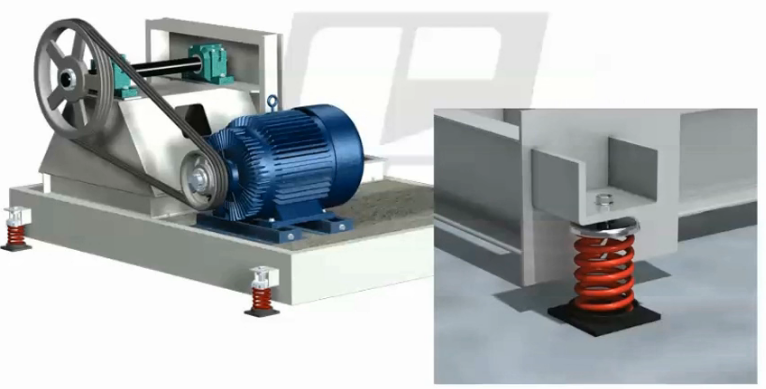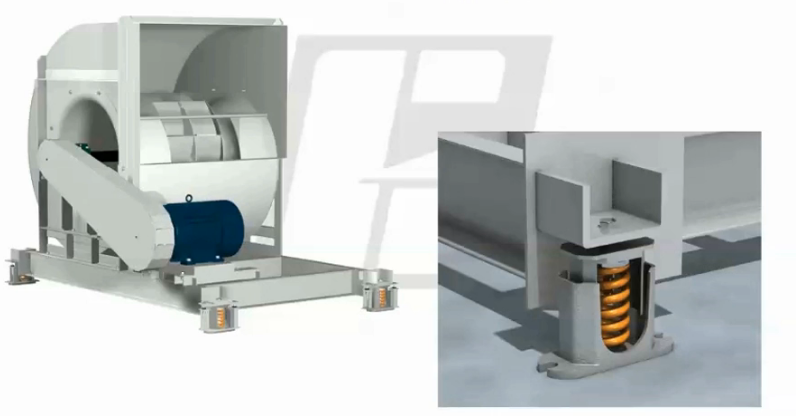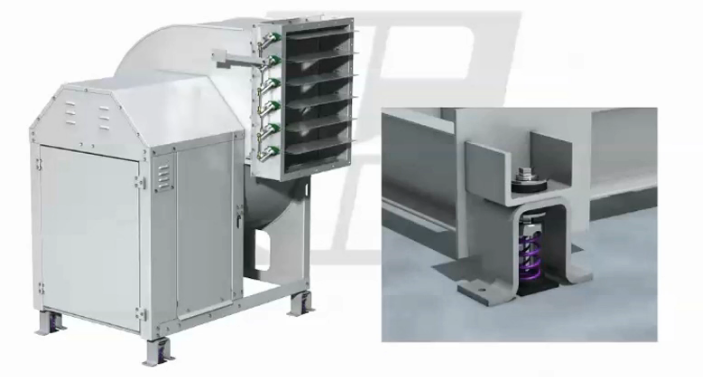Hanging isolators are typically used with inline fans. In addition to rubber and spring isolators, some hangers are available with a combination of both the spring and rubber element. Base mounted isolators may be mounted directly under the fan or used in conjunction with a mounting base or a rail. The application or configuration may dictate the type of isolator.
Based mounted spring isolators are available in three general types: a free-standing open spring, a housed spring and restrained spring. The terms housed spring and restrained spring are sometimes used interchangeably depending on the manufacturer or design.
Open free-standing springs are used when horizontal or vertical is not required or desired. They are typically used and recommended for indoor use and allow for the most freedom of motion.

Housed spring mounts incorporate springs located in a cast steel or aluminum housing. They include rubber or formed inserts which limit side to side motion. Housed springs are typically limited to application where a small amount of vibration is acceptable. Some applications include limiting motion during startup with large motors or motion that may occur during operation or shutdown.

Restrained spring isolators incorporate either vertical or both horizontal and vertical restraint. They are typically used and recommended for outdoor use.

Mounting rails and bases are frequently used with isolators. They can provide additional support, stability or help equalize outside load. Rails are usually used in pairs. A floor mounted rail under a utility fan is an example of providing additional support. This type of rail is usually limited to smaller fans. Floor mounted rails can be structural beams.
Mounting bases are available in two basic types: a steel base or a concrete inertia base. A steel base is usually a one piece welded steel frame designed to support the weight of the equipment and provide a rigid platform. Some fan manufacturers may assemble the base, fan, motor and the drives and ship as one complete unit. The concrete inertia base is a pouring form that is filled with concrete at the jobsite. The bases provide extra mass, lower the center of gravity and help reduce the motion of equipment. They are used in applications that have large motors, high thrust, or in critical installation where higher spring deflections are required. They can also be used on rooftops to help reduce the effects of the wind. Isolators, mounting rails or base type depend on the equipment, application and location.